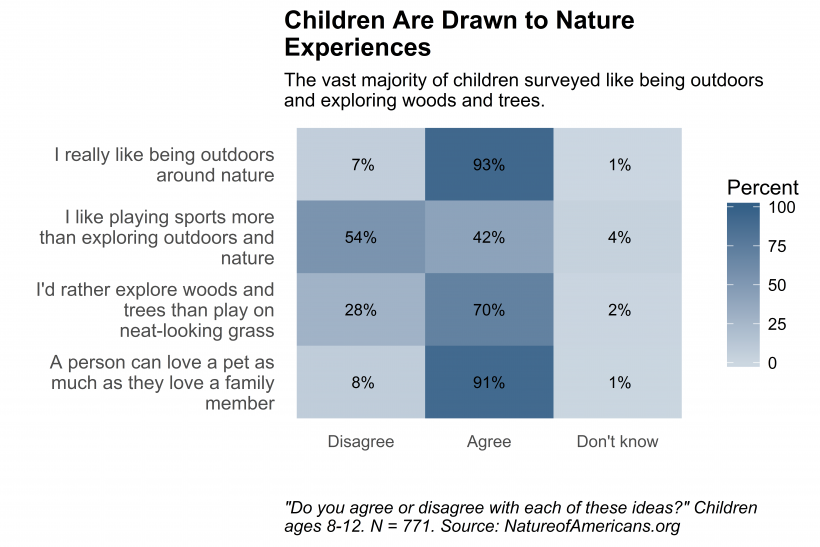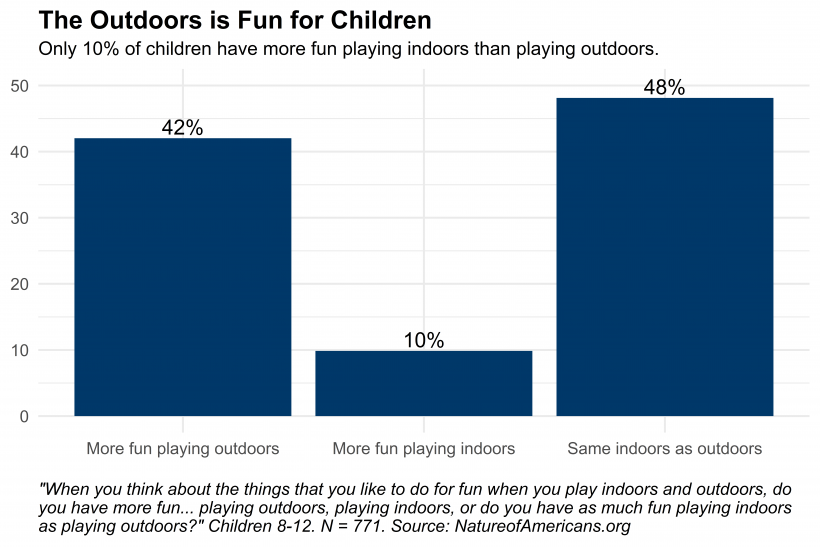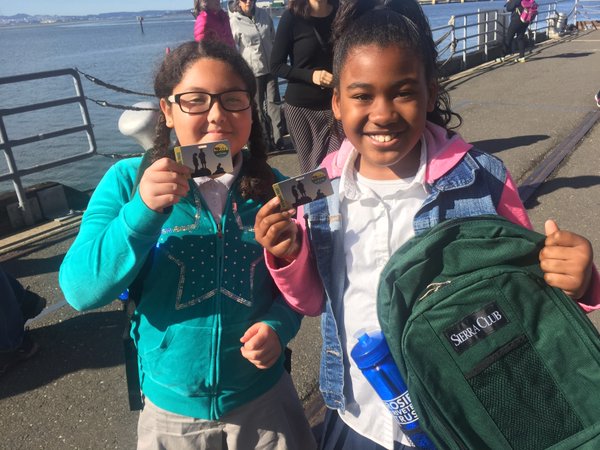Children receiving their Every Kid in a Park passes in Richmond, CA, one federal program supporting opportunities to get kids outdoors.
A new landmark study, the Nature of Americans, reinforces the importance of access to nearby nature, and the necessity of programs that connect youth with the outdoors. The study also examines many barriers to the natural world and offers insights into how we can better collaborate to improve outdoor opportunities for kids and families.
The multi-year national study surveyed 771 children across demographics between 8 and 12 years of age, along with one of each of their parents. The study found that children like to experience nature in a variety of ways, such as playing, biking, swimming, climbing trees, exploring the woods, camping, visiting nature centers, local zoos, and parks. Children also have much more fun playing outdoors than indoors, or mixing outdoors and indoors. When asked if they had more fun playing outdoors or indoors, 42% of children surveyed stated that they preferred outdoors with only a meagre 10% showing their preference for playing indoors. Almost half of these children stated that they would like to balance between outdoors and indoors when playing. A staggering 70% of the children said they would “rather explore woods and trees than play on neat-looking grass.” And they like to share their outdoor experiences with their families and friends. Most of the children shared that being in nature made them feel happier and healthier, and boosted their self-confidence and interactions with peers.


Charts courtesy: https://natureofamericans.org/visualizations?tid=All
The study reaffirms what we already know intuitively. Children need nature and they need it close at home. Curious and exploratory by nature, children do not need to travel for miles to experience nature. Children’s exposure to nature can begin through activities such as “encountering a particular insect in the backyard, catching fish with a grandparent, swinging in a school yard, climbing trees with a brother or sister, watching animals, and wading in a creek with friends and relatives.” Unfortunately, fewer than half of all children in America can walk to a park. This resonates with findings by the Trust of Public Land reflected in ParkScore, an annual index that assesses park access and quality in 100 major U.S. cities. Studies by National Recreation and Parks Association and Harvard University found parks to be distributed inequitably in low-income and minority communities, thus inflating the problem.
According to the American Heart Association, the adverse impacts of lack of physical activities on children range from increased likelihood of childhood obesity, cardiovascular diseases, and diabetes. The Centers for Disease Control and Prevention recommends that children spend at least 60 minutes each day doing moderate and vigorous physical activities. According to the Nature of Americans survey, though most parents recognize the importance of outdoors and green space leading to physical and mental development both for themselves and their children, there still remains a gap between their interest and action. This contradiction could be attributed to the gap between willingness to be in nature and their ability to do so.
In addition to competing priorities for time, attention, and money, another major factor responsible for this human-nature disconnect includes distractions by electronic media. The survey found that today’s children are spending a large amount of time each day in front of televisions and computers, which may be adversely impacting their social skills. When a group of sixth-graders were totally kept away from digital devices such as smartphones and TVs for five days, they scored much better at reading human emotions than their classmates who were allowed their usual screen times each day.
Despite these barriers, about half of the parents interviewed strongly suggested that they want their kids outdoors and that there should be greater investments in conservation education programs. The survey recommends greater cross-sector collaboration to promote the benefits of open space and outdoor opportunities for children and to identify ways to remove barriers.
